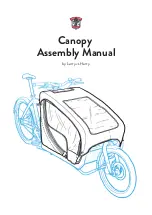
28
1.3 Usage restrictions
1.4 Safety
When buying your bike, please make sure that it
is suitable for your intended use (see 1.2 Model
guide)
All of O2Feel’s bikes are “electrically power
assisted”, which means that the assistance only
kicks in when you pedal.
In accordance with the
NF EN 15194 standard, assistance is also limited
to 25km/hr.
If you exceed this speed, the motor
will stop supplying power.
Pedalling can be harder when assistance is
deactivated or when the battery is low. In addition,
an electric bike is heavier than a classic bike. Make
sure you have enough battery power to complete
your journey or that you are capable of completing
your journey without assistance, as the case may
be.
The maximum ranges provided can vary and
depend on a number of factors, including (but
not limited to): weight of the cyclist, weight of
the load, gradient, condition of the road, level of
assistance chosen etc.
Any attempts to remove the limitations of your
O2feel e-bike are strongly discouraged. This
would in fact make your bike illegal to cycle
on public highways and would result in using
it beyond the restrictions for which it has been
designed. This would automatically invalidate
the guarantee.
The bikes are subject to load restrictions that
take into account the weight of the cyclist,
added to which is the weight of any luggage
and accessories. If this limit is exceeded, this will
invalidate the guarantee.
Cycling involves risks, including in particular falling
off, which can cause injuries. O2Feel therefore
recommends that users wear an appropriate
helmet (NF EN 1078). Wearing a helmet is
compulsory in France for any child under 12,
whether they are cycling or a passenger.
An electric bike may behave differently from
a classic bike, due to the assistance and the
weight. It is a good idea to familiarise yourself
with your bike before using it on a public
highway.
When you cycle on a public highway, always make
sure you follow the highway code for the country
in which you are cycling.
When you buy your O2Feel e-bike, it will have
been checked and adjusted by a professional, to
guarantee your enjoyment, comfort and safety.
In order to uphold these standards, it is a good
idea to have your bike serviced regularly by your
approved O2feel reseller.
Check your tyre pressure whenever you are about
to go out. The recommended pressure is indicated
on the side of the tyre.
Regularly check that the screws are tight (pannier,
stem, handlebars, wheels, brakes, saddle).
2. Familiarise yourself with your bike
2.1 Adjusting the position
2.1.1 Attaching the pedals
If you ever need to remove your pedals, be aware
that on the inside of your pedal you will find an R
and an L. The R pedal should be fitted on the right
(the side with the chainring(s)). The L pedal should
be fitted on the left (the side without a chainring).















































